-
EXECUTIVE SUMMARY
-
GLOBAL SEAWEED BASED
-
COATING MARKET, BY APPLICATION
-
GLOBAL SEAWEED BASED COATING MARKET, BY REGION
-
MARKET INTRODUCTION
-
DEFINITION
-
SCOPE OF THE STUDY
-
MARKET STRUCTURE
-
KEY BUYING CRITERIA
-
RESEARCH METHODOLOGY
-
RESEARCH PROCESS
-
PRIMARY RESEARCH
-
SECONDARY RESEARCH
-
MARKET SIZE ESTIMATION
-
TOP DOWN & BOTTOM-UP
-
APPROACH
-
FORECAST MODEL
-
LIST OF ASSUMPTIONS
-
MARKET DYNAMICS
-
INTRODUCTION
-
DRIVERS
-
RAPIDLY GROWING DEMAND FOR REDUCING PLASTIC WASTE WILL FUEL THE GROWTH OF THE SEAWEED-BASED
-
COATING MARKET.
-
DRIVERS IMPACT ANALYSIS
-
RESTRAINTS
- LOW TENSILE STRENGTH COMPARED TO TRADITIONAL PLASTICS AND THE
- RESTRAINTS IMPACT ANALYSIS
-
SECONDARY PACKAGING REQUIREMENT
-
OPPORTUNITIES
- INCREASING USE OF EDIBLE SEAWEED COATING IN
-
THE FOOD INDUSTRY WILL CREATE GROWTH OPPORTUNITIES FOR SEAWEED-BASED COATING INDUSTRY.
-
IMPACT OF COVID-19
-
ON GLOBAL SEAWEED BASED COATING MARKET
-
IMPACT OF COVID-19 ON THE GLOBAL SEAWEED BASED COATING
- IMPACT ON COMPONENT/SERVICES SUPPLIER
- IMPACT ON DISTRIBUTION/LOGISTICS
-
MARKET
-
SUPPLY CHAIN IMPACT
-
IMPACT ON MANUFACTURER/DEVELOPER
-
MARKET FACTOR ANALYSIS
-
SUPPLY/VALUE CHAIN
- MANUFACTURING & ASSEMBLY
- DISTRIBUTION & SALES
- RETAILERS AND END-USERS
-
ANALYSIS
-
RAW MATERIALS AND COMPONENTS SUPPLIERS
-
PORTER’S FIVE
- BARGAINING POWER OF BUYERS
- THREAT OF SUBSTITUTES
- INTENSITY OF RIVALRY
-
FORCES MODEL
-
THREAT OF NEW ENTRANTS
-
BARGAINING POWER OF SUPPLIERS
-
GLOBAL SEAWEED BASED COATING MARKET, BY APPLICATION
-
OVERVIEW
-
GLOBAL SEAWEED BASED
- GLOBAL SEAWEED
-
COATING MARKET SIZE, MARKET ESTIMATES & FORECAST BY APPLICATION, 2019-2030
-
BASED COATING MARKET SIZE: MARKET ESTIMATES & FORECAST BY APPLICATION, 2019-2030
-
GLOBAL SEAWEED BASED
-
COATING MARKET, BY REGION
-
OVERVIEW
-
NORTH AMERICA
- U.S.
- CANADA
-
EUROPE
- GERMANY
- UK
- GCC COUNTRIES
- SOUTH AFRICA
- REST OF THE MIDDLE EAST & AFRICA
-
FRANCE
-
RUSSIA
-
ITALY
-
SPAIN
-
REST OF EUROPE
-
ASIA PACIFIC
-
CHINA
-
INDIA
-
JAPAN
-
SOUTH KOREA
-
REST OF ASIA PACIFIC
-
LATIN AMERICA
-
BRAZIL
-
MEXICO
-
ARGENTINA
-
REST OF LATIN AMERICA
-
MIDDLE EAST & AFRICA
-
COMPETITIVE LANDSCAPE
-
COMPETITIVE OVERVIEW
-
COMPETITIVE BENCHMARKING
-
MAJOR PLAYERS IN THE GLOBAL SEAWEED BASED COATING
-
MARKET
-
LEADING PLAYERS IN TERMS OF THE NUMBER OF DEVELOPMENTS IN THE GLOBAL SEAWEED BASED
-
COATING MARKET
-
KEY DEVELOPMENTS & GROWTH STRATEGIES
-
PRODUCT LAUNCH/PRODUCT DEVELOPMENT/APPROVAL
-
ACQUISITION/PARTNERSHIP
-
COMPANY PROFILES
-
EVOWARE
- COMPANY OVERVIEW
- FINANCIAL OVERVIEW
- PRODUCTS OFFERED
- KEY DEVELOPMENTS
- SWOT ANALYSIS
- KEY STRATEGIES
-
AMTREX
- COMPANY OVERVIEW
- FINANCIAL OVERVIEW
- PRODUCTS OFFERED
- KEY DEVELOPMENTS
- SWOT ANALYSIS
- KEY STRATEGIES
-
NATURE CARE PVT.
-
LTD.
-
COMPANY OVERVIEW
-
FINANCIAL OVERVIEW
-
PRODUCTS OFFERED
-
KEY DEVELOPMENTS
-
SWOT ANALYSIS
-
KEY STRATEGIES
-
NAGASE AMERICA LLC
-
COMPANY OVERVIEW
-
FINANCIAL OVERVIEW
-
PRODUCTS/SERVICES OFFERED
-
OFFERED
-
KEY DEVELOPMENTS
-
KEY DEVELOPMENTS
-
SWOT ANALYSIS
-
KEY STRATEGIES
-
NOTPLA LIMITED
- COMPANY OVERVIEW
- FINANCIAL OVERVIEW
- PRODUCTS/SERVICES OFFERED
- KEY DEVELOPMENTS
- SWOT ANALYSIS
- KEY STRATEGIES
-
MANTROSE UK LTD.
- COMPANY OVERVIEW
- FINANCIAL OVERVIEW
- PRODUCTS/SERVICES
-
SWOT ANALYSIS
-
KEY STRATEGIES
-
SWAY
-
COMPANY OVERVIEW
-
FINANCIAL OVERVIEW
-
PRODUCTS/SERVICES OFFERED
-
KEY DEVELOPMENTS
-
SWOT ANALYSIS
-
KEY STRATEGIES
-
NAGASE AMERICA LLC
- COMPANY OVERVIEW
- FINANCIAL OVERVIEW
- PRODUCTS OFFERED
- KEY DEVELOPMENTS
- SWOT ANALYSIS
- KEY STRATEGIES
-
LOIWARE
- COMPANY OVERVIEW
- FINANCIAL OVERVIEW
- PRODUCTS OFFERED
- KEY DEVELOPMENTS
- SWOT ANALYSIS
- KEY STRATEGIES
-
APPENDIX
-
REFERENCES
-
-
LIST OF TABLES
-
LIST OF ASSUMPTIONS
-
GLOBAL SEAWEED BASED COATING MARKET SIZE
-
ESTIMATES & FORECAST, BY APPLICATION, 2019-2030 (USD MILLION)
-
GLOBAL SEAWEED BASED
-
COATING MARKET SIZE, BY REGION, 2019-2030 (USD MILLION)
-
NORTH AMERICA: SEAWEED BASED COATING MARKET
-
SIZE, BY COUNTRY, 2019-2030 (USD MILLION)
-
NORTH AMERICA SEAWEED BASED COATING MARKET
-
SIZE ESTIMATES & FORECAST, BY APPLICATION, 2019-2030 (USD MILLION)
-
US SEAWEED BASED
-
COATING MARKET SIZE ESTIMATES & FORECAST, BY APPLICATION, 2019-2030 (USD MILLION)
-
CANADA SEAWEED
-
BASED COATING MARKET SIZE ESTIMATES & FORECAST, BY APPLICATION, 2019-2030 (USD
-
MILLION)
-
TABLE
-
EUROPE: SEAWEED BASED COATING MARKET SIZE, BY COUNTRY, 2019-2030 (USD MILLION)
-
EUROPE SEAWEED
-
BASED COATING MARKET SIZE ESTIMATES & FORECAST, BY APPLICATION, 2019-2030 (USD
-
MILLION)
-
TABLE
-
GERMANY SEAWEED BASED COATING MARKET SIZE ESTIMATES & FORECAST, BY APPLICATION,
-
UK SEAWEED BASED COATING MARKET SIZE ESTIMATES & FORECAST,
-
BY APPLICATION, 2019-2030 (USD MILLION)
-
FRANCE SEAWEED BASED COATING MARKET SIZE ESTIMATES
-
& FORECAST, BY APPLICATION, 2019-2030 (USD MILLION)
-
RUSSIA SEAWEED BASED COATING MARKET SIZE
-
ESTIMATES & FORECAST, BY APPLICATION, 2019-2030 (USD MILLION)
-
ITALY SEAWEED BASED
-
COATING MARKET SIZE ESTIMATES & FORECAST, BY APPLICATION, 2019-2030 (USD MILLION)
-
SPAIN SEAWEED
-
BASED COATING MARKET SIZE ESTIMATES & FORECAST, BY APPLICATION, 2019-2030 (USD
-
MILLION)
-
TABLE
-
REST OF EUROPE SEAWEED BASED COATING MARKET SIZE ESTIMATES & FORECAST, BY
-
APPLICATION, 2019-2030 (USD MILLION)
-
ASIA PACIFIC: SEAWEED BASED COATING MARKET SIZE,
-
BY COUNTRY, 2019-2030 (USD MILLION)
-
ASIA PACIFIC SEAWEED BASED COATING MARKET SIZE
-
ESTIMATES & FORECAST, BY APPLICATION, 2019-2030 (USD MILLION)
-
CHINA SEAWEED BASED
-
COATING MARKET SIZE ESTIMATES & FORECAST, BY APPLICATION, 2019-2030 (USD MILLION)
-
INDIA SEAWEED
-
BASED COATING MARKET SIZE ESTIMATES & FORECAST, BY APPLICATION, 2019-2030 (USD
-
MILLION)
-
TABLE
-
JAPAN SEAWEED BASED COATING MARKET SIZE ESTIMATES & FORECAST, BY APPLICATION,
-
SOUTH KOREA SEAWEED BASED COATING MARKET SIZE ESTIMATES &
-
FORECAST, BY APPLICATION, 2019-2030 (USD MILLION)
-
REST OF ASIA PACIFIC SEAWEED BASED COATING
-
MARKET SIZE ESTIMATES & FORECAST, BY APPLICATION, 2019-2030 (USD MILLION)
-
LATIN AMERICA:
-
SEAWEED BASED COATING MARKET SIZE, BY COUNTRY, 2019-2030 (USD MILLION)
-
LATIN AMERICA
-
SEAWEED BASED COATING MARKET SIZE ESTIMATES & FORECAST, BY APPLICATION, 2019-2030
-
(USD MILLION)
-
TABLE
-
BRAZIL SEAWEED BASED COATING MARKET SIZE ESTIMATES & FORECAST, BY APPLICATION,
-
MEXICO SEAWEED BASED COATING MARKET SIZE ESTIMATES & FORECAST,
-
BY APPLICATION, 2019-2030 (USD MILLION)
-
ARGENTINA SEAWEED BASED COATING MARKET SIZE ESTIMATES
-
& FORECAST, BY APPLICATION, 2019-2030 (USD MILLION)
-
REST OF LATIN AMERICA SEAWEED BASED COATING
-
MARKET SIZE ESTIMATES & FORECAST, BY APPLICATION, 2019-2030 (USD MILLION)
-
MIDDLE EAST
-
& AFRICA: SEAWEED BASED COATING MARKET SIZE, BY COUNTRY, 2019-2030 (USD MILLION)
-
MIDDLE EAST
-
& AFRICA SEAWEED BASED COATING MARKET SIZE ESTIMATES & FORECAST, BY APPLICATION,
-
GCC COUNTRIES SEAWEED BASED COATING MARKET SIZE ESTIMATES
-
& FORECAST, BY APPLICATION, 2019-2030 (USD MILLION)
-
SOUTH AFRICA SEAWEED BASED COATING MARKET
-
SIZE ESTIMATES & FORECAST, BY APPLICATION, 2019-2030 (USD MILLION)
-
REST OF MIDDLE
-
EAST & AFRICA SEAWEED BASED COATING MARKET SIZE ESTIMATES & FORECAST, BY
-
APPLICATION, 2019-2030 (USD MILLION)
-
MAJOR PLAYERS IN THE GLOBAL SEAWEED BASED COATING
-
MARKET
-
TABLE
-
THE MOST ACTIVE PLAYERS IN THE GLOBAL SEAWEED BASED COATING MARKET
-
PRODUCT LAUNCH/PRODUCT
-
DEVELOPMENT/APPROVAL
-
TABLE
-
ACQUISITION/ PARTNERSHIP
-
TOMORROW MACHINE SE: PRODUCTS OFFERED
-
TOMORROW MACHINE SE: KEY DEVELOPMENTS
-
ENVIGREEN:
-
PRODUCTS OFFERED
-
TABLE
-
DEVRO: PRODUCTS OFFERED
-
REGENO: PRODUCTS/SERVICES OFFERED
-
EVO &CO.: PRODUCTS/SERVICES OFFERED
-
DESIGN INDABA:
-
PRODUCTS/SERVICES OFFERED
-
MONOSOL LLC: PRODUCTS OFFERED
-
AMTREX, NATURE CARE PVT. LTD.: PRODUCTS
-
OFFERED
-
TABLE
-
NAGASE AMERICA LLC: PRODUCTS OFFERED
-
NOTPLA: PRODUCTS OFFERED
-
LIST OF FIGURES
-
MARKET SYNOPSIS
-
GLOBAL SEAWEED
-
BASED COATING MARKET ANALYSIS BY APPLICATION
-
GLOBAL SEAWEED BASED COATING MARKET ANALYSIS
-
BY REGION
-
FIGURE
-
GLOBAL SEAWEED BASED COATING MARKET: MARKET STRUCTURE
-
KEY BUYING CRITERIA OF TURBINE IN THERMAL
-
POWER
-
FIGURE
-
RESEARCH PROCESS OF MRFR
-
DRO ANALYSIS OF GLOBAL SEAWEED BASED COATING MARKET
-
DRIVERS IMPACT
-
ANALYSIS: SEAWEED BASED COATING MARKET
-
RESTRAINTS IMPACT ANALYSIS: SEAWEED BASED COATING
-
MARKET
-
FIGURE
-
SUPPLY / VALUE CHAIN: GLOBAL SEAWEED BASED COATING MARKET
-
GLOBAL SEAWEED BASED COATING MARKET, BY
-
APPLICATION, 2022 (% SHARE)
-
GLOBAL SEAWEED BASED COATING MARKET, BY APPLICATION, 2019
-
TO 2030 (USD MILLION)
-
FIGURE
-
GLOBAL SEAWEED BASED COATING MARKET, BY REGION, 2022 TO 2030 (USD MILLION)
-
GLOBAL SEAWEED
-
BASED COATING MARKET, BY REGION, 2022 (% SHARE)
-
NORTH AMERICA: SEAWEED BASED COATING MARKET
-
SHARE, BY COUNTRY, 2022 (% SHARE)
-
EUROPE: SEAWEED BASED COATING MARKET SHARE, BY COUNTRY, 2022
-
(% SHARE)
-
FIGURE
-
ASIA PACIFIC: SEAWEED BASED COATING MARKET SHARE, BY COUNTRY, 2022 (% SHARE)
-
LATIN AMERICA:
-
SEAWEED BASED COATING MARKET SHARE, BY COUNTRY, 2022 (% SHARE)
-
MIDDLE EAST & AFRICA:
-
SEAWEED BASED COATING MARKET SHARE, BY COUNTRY, 2022 (% SHARE)
-
BENCHMARKING OF MAJOR
-
COMPETITORS
-
FIGURE
-
TOMORROW MACHINE SE: FINANCIAL OVERVIEW SNAPSHOT
-
TOMORROW MACHINE SE: SWOT ANALYSIS
-
ENVIGREEN:
-
SWOT ANALYSIS
-
FIGURE
-
DEVRO: SWOT ANALYSIS
-
REGENO: SWOT ANALYSIS
-
EVO &CO.: SWOT ANALYSIS
-
DESIGN INDABA: FINANCIAL
-
OVERVIEW SNAPSHOT
-
FIGURE
-
MONOSOL LLC: SWOT ANALYSIS
-
AMTREX, NATURE CARE PVT. LTD.: FINANCIAL OVERVIEW SNAPSHOT
-
NAGASE AMERICA
-
LLC: SWOT ANALYSIS
-
FIGURE
-
NOTPLA: SWOT ANALYSIS
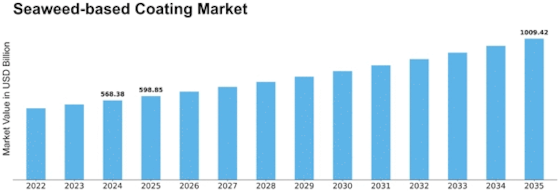

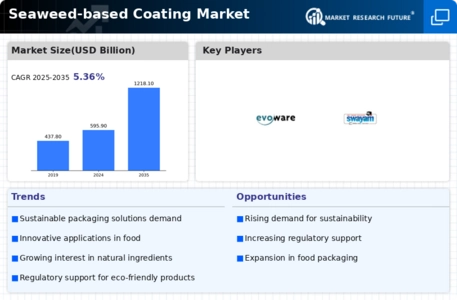
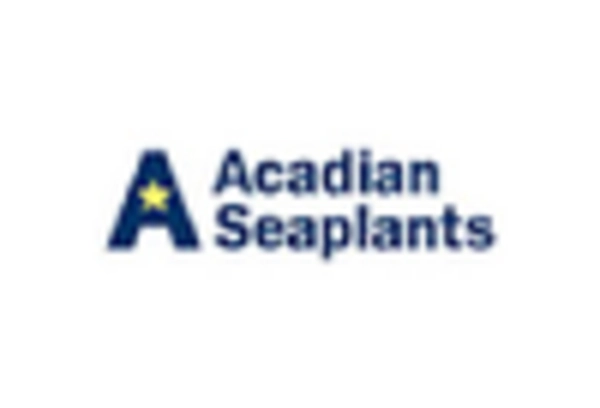
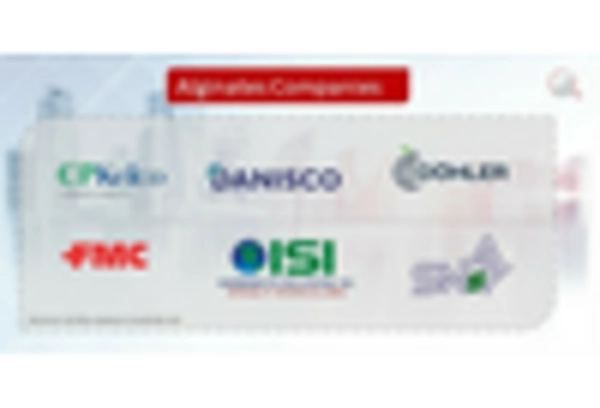
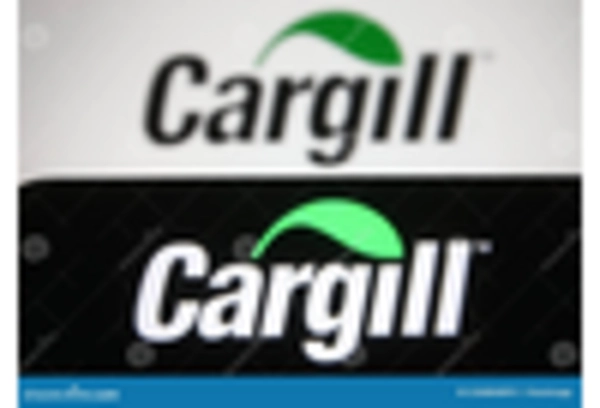
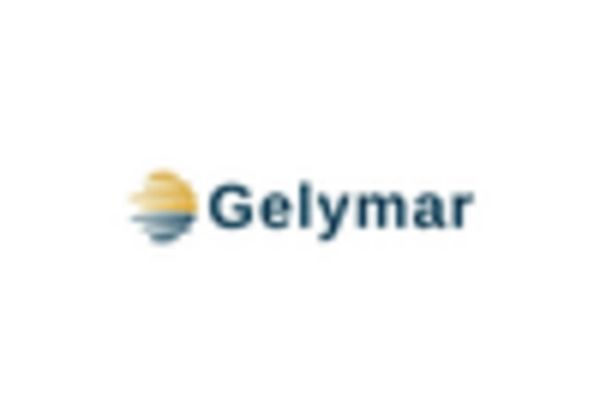
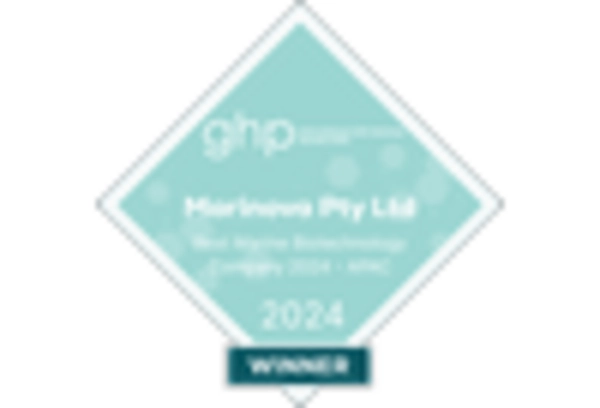










Leave a Comment